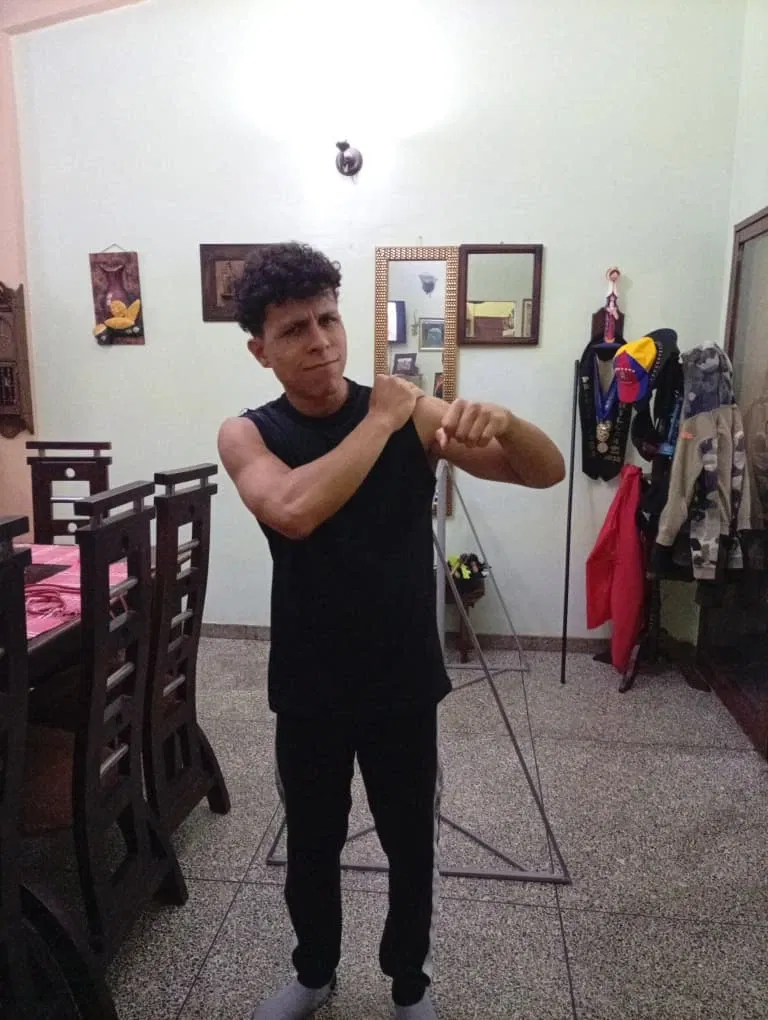
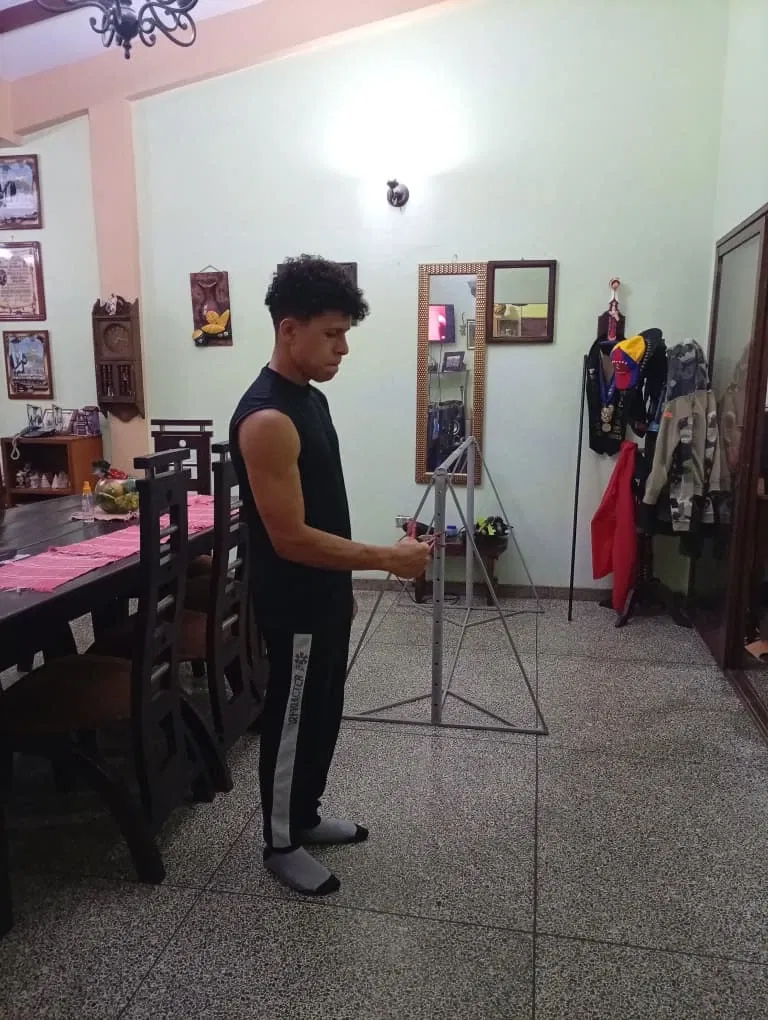
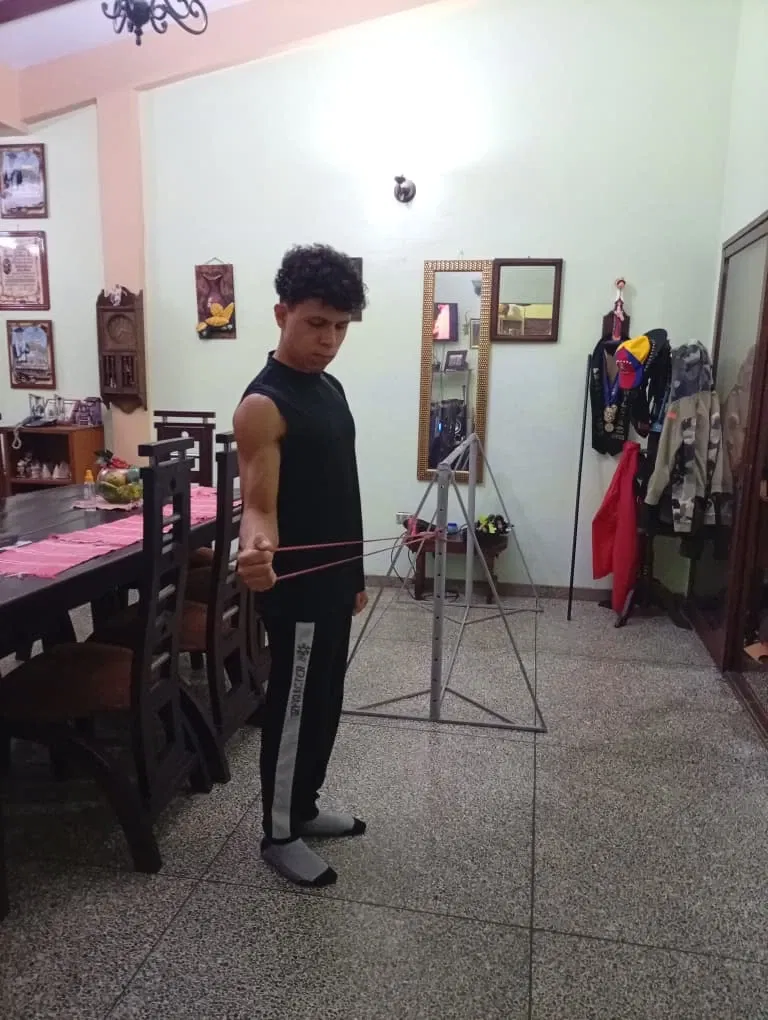
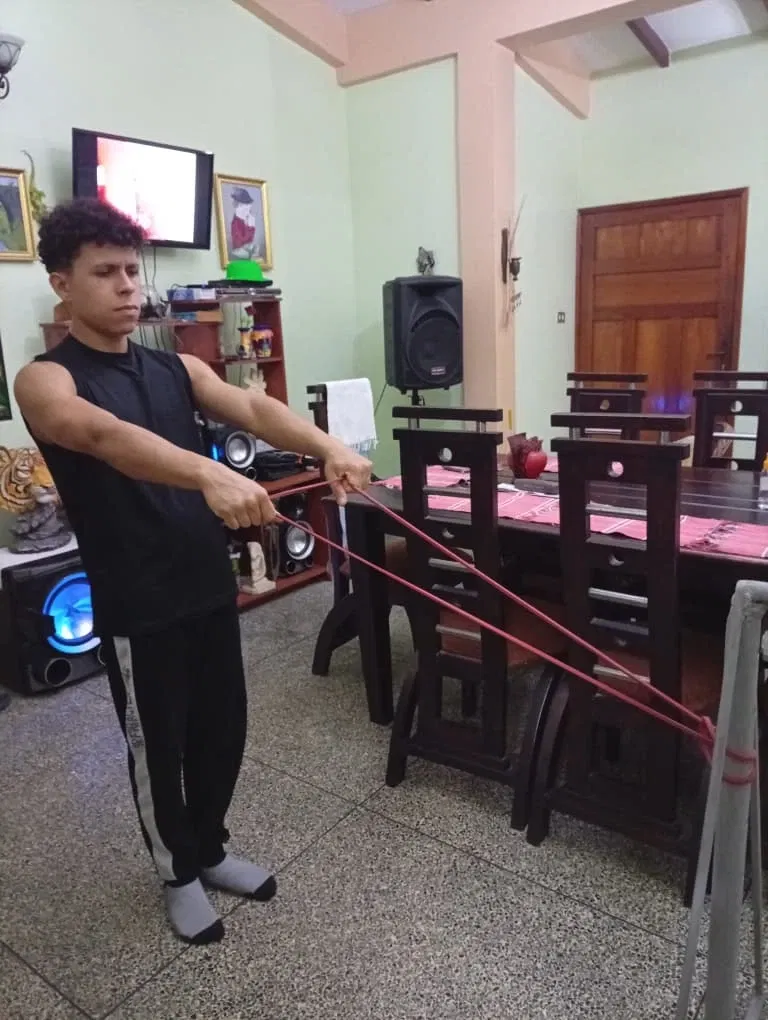
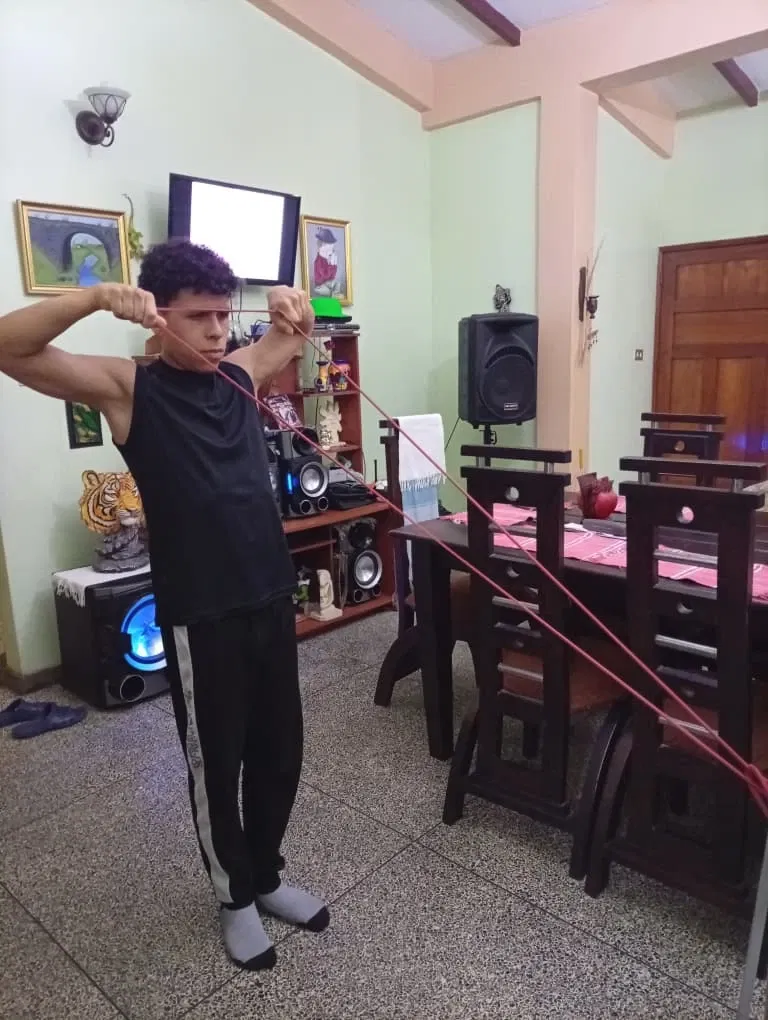


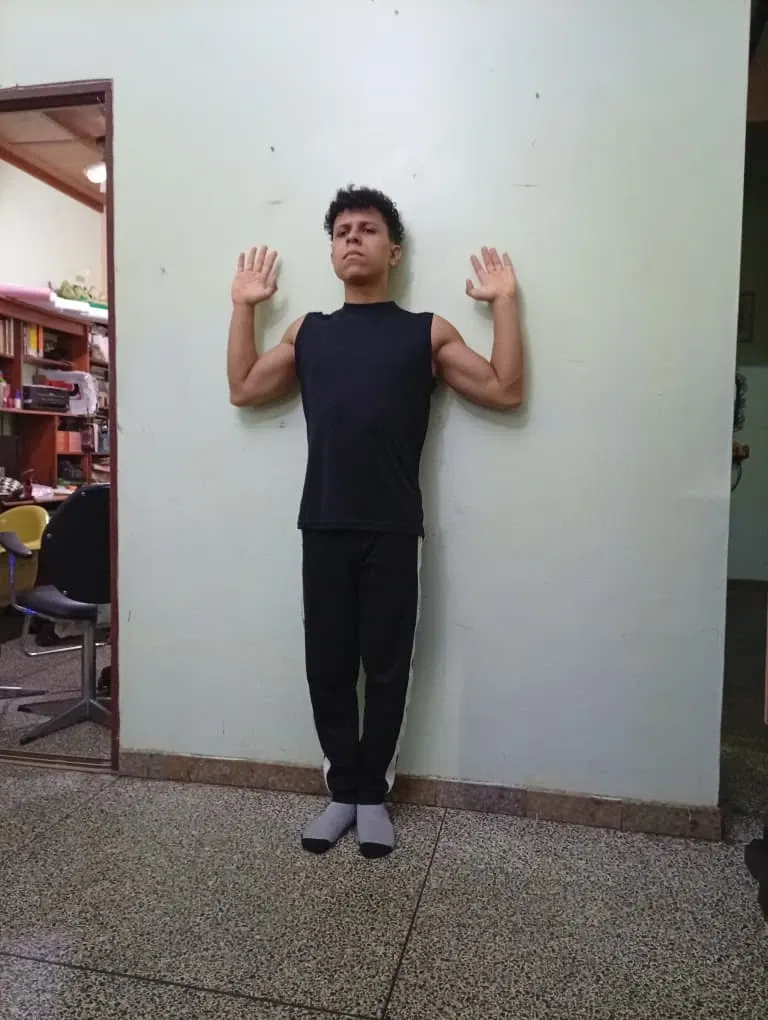
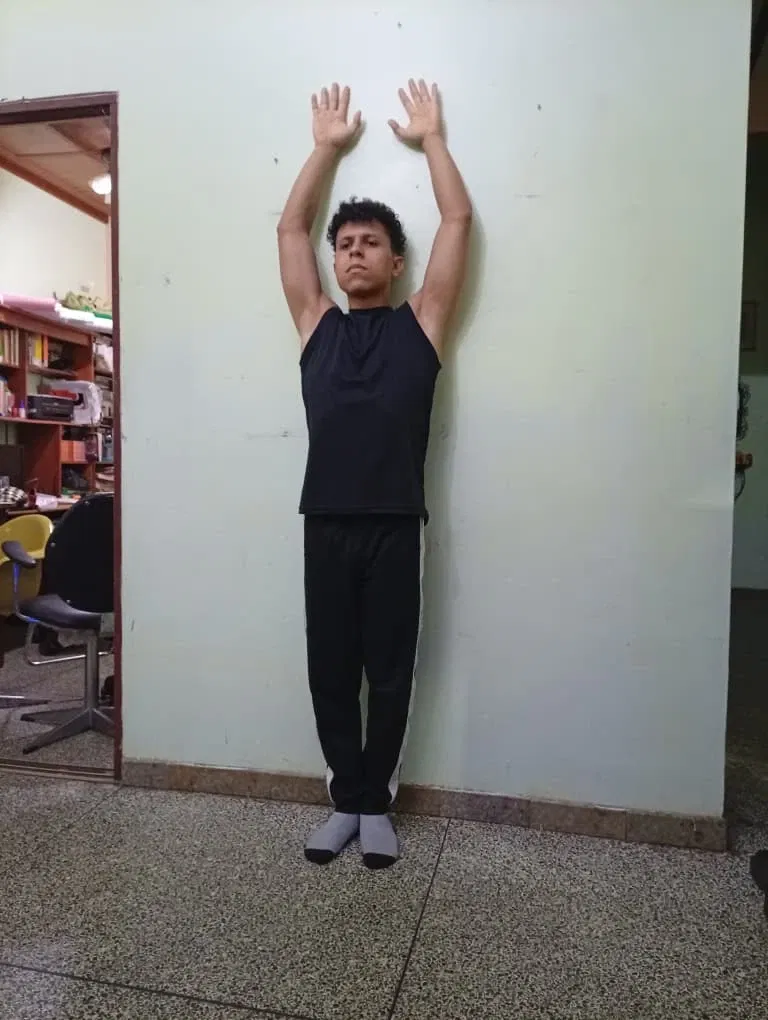
|
Español
|
English
| |-|-|
¡Hola, comunidad de #Hive y #SWC! Espero que todos se encuentren muy bien. Para mí es un gusto compartirles mi nueva publicación del día de hoy.
Hoy les voy a hablar sobre algo que no puede faltar en tus entrenamientos, especialmente en el calentamiento: el manguito rotador. Calentar esta zona previene lesiones y es fundamental para un rendimiento óptimo. En esta publicación, les explicaré en detalle cómo calentar correctamente el manguito rotador, además de definir su importancia y por qué es crucial en la calistenia. Todo esto y más lo verán en esta publicación. Sin más nada que decir, comencemos.
¡Hello, #Hive and #SWC community! I hope you're all doing well. It's a pleasure to share my new post today.
Today, I'm going to talk about something that shouldn't be missing from your workouts, especially during your warm-up: the rotator cuff. Warming up this area prevents injuries and is essential for optimal performance. In this post, I'll explain in detail how to properly warm up the rotator cuff, as well as define its importance and why it's crucial in calisthenics. You'll see all this and more in this post. Without further ado, let's begin.
---
En la calistenia, llevamos los hombros al límite constantemente. Si quieres ejecutar estáticos como la plancha o el front lever, o simplemente colgarte de la barra sin dolor, debes tratar al manguito rotador como tu activo más valioso. Ignorarlo puede resultar en una lesión que te dejará fuera del entrenamiento por meses.
¿Qué es el manguito rotador y por qué es crucial? El manguito rotador es un grupo de cuatro músculos y sus tendones que rodean la articulación del hombro. Su función principal es estabilizar la cabeza del húmero dentro de la cavidad escapular, permitiendo movimientos potentes y controlados. Además, proporciona estabilidad en los estáticos, manteniendo el hombro encajado durante ejercicios como la plancha y el front lever. También asegura la seguridad en tracciones, evitando que el húmero se desplace al realizar dominadas explosivas o colgarse de la barra.
¿Cómo calentar el manguito rotador? Es recomendable dedicar entre 5 y 7 minutos del calentamiento a activar el manguito rotador. El objetivo es aumentar el flujo sanguíneo y despertar estos estabilizadores antes de cargar el hombro con peso o isométricos intensos. Aquí tienes tres ejercicios clave:
1. Rotaciones externas con banda elástica: Sujeta una banda elástica ligera con ambas manos. Mantén los codos pegados al cuerpo y flexionados a 90 grados. Separa las manos rotando los antebrazos hacia afuera, sintiendo la contracción en la parte posterior del hombro. Regresa lentamente a la posición inicial. Realiza 15 a 20 repeticiones.
2. Face pulls con banda elástica: Fija la banda a la altura de tu cara. Agarra los extremos y tira de la banda hacia tu frente, separando las manos a medida que se acercan a tu rostro. Concéntrate en juntar las escápulas (retracción escapular) durante el movimiento. Este ejercicio trabaja el manguito rotador y los estabilizadores escapulares de manera simultánea. Haz 12 a 15 repeticiones.
3. Rotaciones internas lentas: De pie, con el brazo pegado al cuerpo, flexiona el codo a 90 grados. Mueve el antebrazo hacia adentro, cruzando ligeramente el cuerpo, y enfócate en la contracción interna. Puedes realizarlo con o sin banda elástica. Haz 15 repeticiones por brazo.
Qué no debes hacer para prevenir lesiones:
· No estires en frío: Evita los estiramientos estáticos profundos del hombro antes de entrenar. Estos deben realizarse al final, cuando los músculos están calientes.
· No trabajes con dolor: Si sientes un pinchazo agudo o dolor punzante durante las rotaciones, detente inmediatamente. Es señal de inflamación o irritación.
· No ignores la técnica: En tracciones, dominadas y muscle ups, inicia el movimiento con la depresión escapular. Evita que el hombro se eleve hacia la oreja.
Un manguito rotador bien calentado es sinónimo de un hombro fuerte y duradero. ¡Ánimo en sus entrenos y a seguir progresando sin parar!
In calisthenics, we constantly push our shoulders to the limit. If you want to perform static exercises like the plank or front lever, or simply hang from the bar without pain, you must treat your rotator cuff as your most valuable asset. Ignoring it can result in an injury that will keep you out of training for months.
What is the rotator cuff and why is it crucial? The rotator cuff is a group of four muscles and their tendons that surround the shoulder joint. Its main function is to stabilize the head of the humerus within the scapular cavity, allowing for powerful and controlled movements. It also provides stability in static positions, keeping the shoulder engaged during exercises such as the plank and front lever. It also ensures safety during pull-ups, preventing the humerus from shifting during explosive pull-ups or hanging from a bar.
How to warm up the rotator cuff? It's recommended to spend 5 to 7 minutes of your warm-up activating the rotator cuff. The goal is to increase blood flow and awaken these stabilizers before loading the shoulder with weights or performing intense isometric exercises. Here are three key exercises:
1. External rotations with a resistance band: Hold a light resistance band with both hands. Keep your elbows close to your body and bent at 90 degrees. Move your hands apart, rotating your forearms outward, feeling the contraction in the back of your shoulder. Slowly return to the starting position. Perform 15 to 20 repetitions.
2. Face pulls with an elastic band: Secure the band at face level. Grab the ends and pull the band toward your forehead, moving your hands apart as they approach your face. Focus on squeezing your shoulder blades together (scapular retraction) during the movement. This exercise works the rotator cuff and scapular stabilizers simultaneously. Perform 12 to 15 repetitions.
3. Slow internal rotations: Standing with your arm at your side, bend your elbow to 90 degrees. Move your forearm inward, slightly across your body, and focus on the internal contraction. You can perform this exercise with or without an elastic band. Perform 15 repetitions per arm.
What not to do to prevent injuries:
· Don't stretch when cold: Avoid deep static shoulder stretches before training. These should be done at the end, when the muscles are warm.
· Don't work through pain: If you feel a sharp sting or stabbing pain during rotations, stop immediately. It's a sign of inflammation or irritation.
· Don't ignore the technique: In pull-ups, pull-ups, and muscle-ups, start the movement with scapular depression. Avoid raising your shoulder toward your ear.
A well-warmed rotator cuff is synonymous with a strong and durable shoulder. Good luck with your workouts and keep making progress!
---
Bueno, hasta aquí la publicación de hoy. Espero que les haya gustado mi contenido. Agradezco mucho el tiempo dedicado a leer mi publicación y, si les gustó, síganme para más. ¡Muchas gracias y hasta la próxima!
Well, that's it for today's post. I hope you enjoyed my content. I really appreciate the time you took to read my post, and if you liked it, please follow me for more. Thank you very much, and see you next time!
---
---
Creando contenido profesional único para ti
>
Creating unique professional content for you
Equipo oficial de Calistenia
**Cámara utilizada : Xiaomi Redmi14C
Traductor: DeepL**
>
**Camera used: Xiaomi Redmi14C
Translator: DeepL**
---

|
|-|
|
Créditos
|
Credits
|
|-|-|
|
Cámara
|
Camera
|
|
@sw-juanpedro
|
@sw-juanpedro
|
|
Producción
|
Production
|
|
@sw-juanpedro
|
@sw-juanpedro
|
Fecha
|
date
|-|-|
27/10/2025
|
27/10/2025
---

---
🌎🌐Redes Sociales🌎🌐
🌎🌐Social Network🌎🌐
#spanish
#deportes
#calistenia
#swc
#hive
#swhive
#neoxian
#neoxian-swc
#colmena
#streetworkout
Payout: 0.000 HBD
Votes: 63
More interactions (upvote, reblog, reply) coming soon.